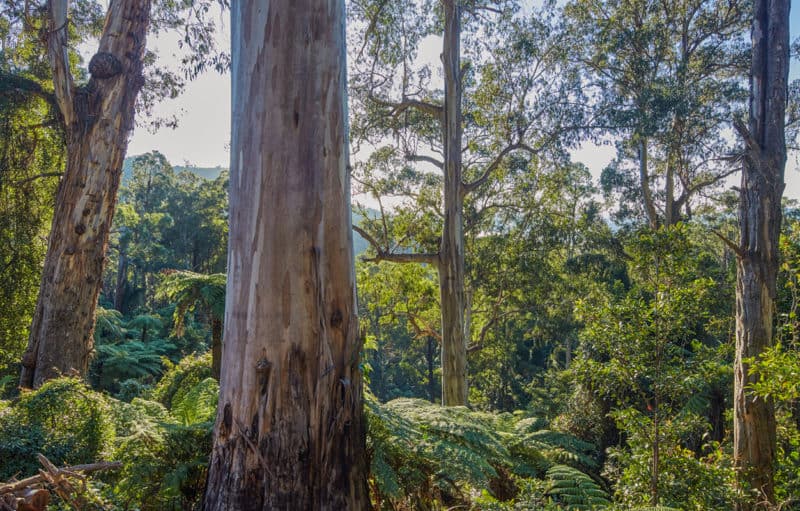MEDIA RELEASE 16 November 2018 |
This summer hundreds of divers and snorkelers will once again take to the water as part the Great Victorian Fish Count, the largest marine citizen science event in Victoria.
People across the state band together to collect important information on the distribution and relative abundance of some of Victoria’s unique marine life. “This is a great opportunity for the community to get out and experience life in coastal ecosystems while collecting valuable data on species that call Victorian waters home,” says ReefWatch project officer for the Victorian National Parks Association, Nicole Mertens.
Now in its fourteenth year, the Great Victorian Fish Count is organised by the Victorian National Parks Association in partnership with local dive operators and community groups and supported by Parks Victoria, Museums Victoria along with Redmap Australia, and Coastcare Victoria.
This year the event will run over five weekends from Saturday 17 November until Sunday 16 December at sites across the Victorian coastline.
Victoria has some unique sharks and rays, most of which are harmless to humans, and an encounter with one can be the highlight of a dive or snorkel. That’s why this year’s count is focusing on the “friendly faces” of our coastal waters and highlighting the vital role that sharks and rays play in maintaining healthy marine ecosystems. Divers and snorkelers are encouraged to look out for popular species such as the Spotted Wobbegong, Smooth Stingray and Port Jackson Shark- also known as the “puppies of the sea”.
“Port Jackson Sharks are great ambassadors for the Fish Count as well as sharks in general. This group of fish is often portrayed negatively because of the dangers posed by a handful of species, and public perception of sharks may impact on our efforts to protect them.
It’s been fantastic to hear back from participating groups excited about seeing Port Jackson Sharks at their local survey site, sharing photos and promoting the chance of an encounter with this iconic species. With their small size, good nature and quirky facial features they’re hard not to love”, says Nicole.
“Reefs around the bay and along the coast particularly in marine protected areas like Ricketts Point, Point Cook, and Jawbone Marine Sanctuaries are great places to look for Port Jackson Sharks as well as other sharks and rays that form part of Victoria’s diverse fish life.” Says Parks Victoria’s State-wide – Leader Marine and Coasts, Mark Rodrigue.
Parks Victoria will help coordinate snorkel surveys in a number of Victoria’s marine national parks and sanctuaries including in the Barwon Bluff Marine Sanctuary near Barwon Heads, and the three Marine Sanctuaries in Port Phillip Bay.
“Getting involved in the Great Victorian Fish Count in marine protected areas is a great way to both improve understanding of which fish occur in these parks as well as having fun and meeting like-minded people, and supports our “Healthy Parks – Healthy People” approach, encouraging community participation in these special places,” Mark says.
The Great Victorian Fish Count is also closely aligned with the National Redmap project, which is led by Museums Victoria, in Victoria. Redmap tracks marine species that may be “moving home” due to warming oceans. Fish counters will be encouraged to sign up to Redmap and log sightings of sharks, rays and other unusual fishes they encounter on their dives.
“Although healthy shark and ray populations are vital to maintaining healthy oceans, many species are threatened around the world and their populations are in decline.” Says Redmap Australia Program Leader for Victoria Dianne Bray.
“The Great Victoria Fish Count will greatly increase our knowledge of sharks, rays and other fishes in Victoria. Please sign up to Redmap (www.redmap.org.au) and log your sightings to help us gather information on the impacts of climate change along our coast.”
Registrations of interest for the Great Victorian Fish Count are currently open to dive clubs and community groups to run an activity along the Victorian coastline. For further information visit bit.ly/greatvicfishcount or phone the Victorian National Parks Association on (03) 9341 6500.
Survey sites already confirmed include Rye Pier, Portsea Pier, Shack Bay, Harmers Haven, St Leonard’s Pier, Blairgowrie Pier, Barwon Bluff Marine Sanctuary, Mornington, Jawbone Marine Sanctuary, Ricketts Point Marine Sanctuary, Point Cook Marine Sanctuary, Eagle Rock Marine Sanctuary, and Mushroom Reef Marine Sanctuary.
Photos available for use: https://flic.kr/s/aHsmvMWoK3
Note: The fish count will offer further photos and media opportunities close to Melbourne, including at Rye Pier, Ricketts Point, Jawbone and Point Cook Marine Sanctuaries.
